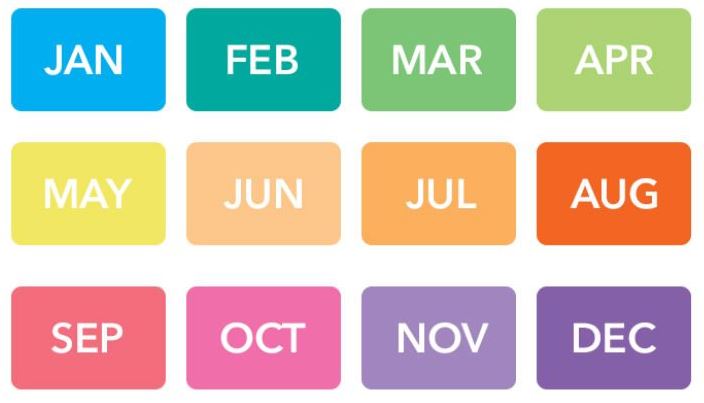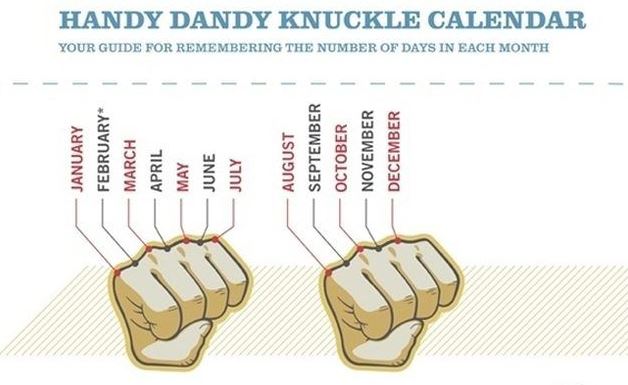There are twelve months in a year:

Table of Contents
Months in Detail
Here are the twelve months in detail:
| Month Order | Month Name | 3 Letters Format | Days in Month |
| 1 | January | Jan | 31 |
| 2 | February | Feb | 28 (29 in leap years) |
| 3 | March | Mar | 31 |
| 4 | April | Apr | 30 |
| 5 | May | May | 31 |
| 6 | June | Jun | 30 |
| 7 | July | Jul | 31 |
| 8 | August | Aug | 31 |
| 9 | September | Sep | 30 |
| 10 | October | Oct | 31 |
| 11 | November | Nov | 30 |
| 12 | December | Dec | 31 |
February The Unique Month
The most unique month of all is February.
February only has 28 days, but it has 29 days on Leap Years February!
How to Remember
You can remember how many days in each month using this rhyme:
30 days has September,
April, June and November.
All the rest have 31
Except February alone,
Which has 28 days clear
And 29 in each leap year.
Or you can use the “knuckle method“:

A knuckle is “31 days”, and in between each knuckle it isn’t.
And where you hands meet, the two knuckles are “July, August”, which both have 31 days.
(Note: the last knuckle isn’t used)
The Moon

The months were originally based on the movement of the moon, but this did not work out perfectly to one year.
So they changed how many days in some months to make them all add up to one year.
The Secret of Month Name
Ancient Romans had 10 Months:
Martius for the god Mars
Aprilis
Maius for the goddess Maia
Iunius for the goddess Juno
Quintilis from Latin quinque meaning five
Sextilis for six
Septembris for seven
Octobris for eight
Novembris for nine
Decembris for ten (remember “Decimal” means based on 10)
Around 710 BC, Numa Pompilius (the second King of Rome) added 2 months:
January, for the god Janus
February, from Latin februum meaning purification.
Unfortunately, this wrecked the nice numbering system of the later months.
In 44 BC, Quintilis was renamed Iulius (July) in honour of Julius Caesar
In 8 BC Sextilis was renamed Augustus (August) in honour of Augustus.
So we know the reason behind all the names except April!
